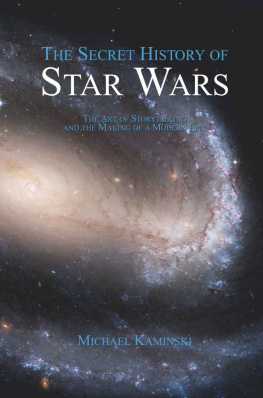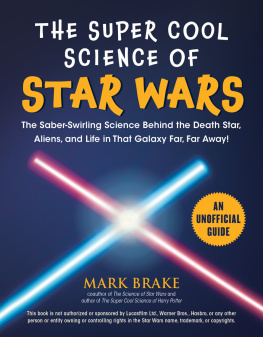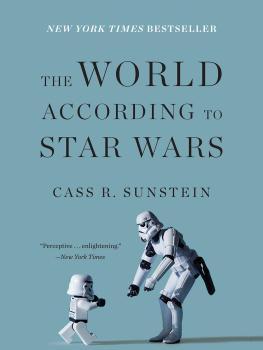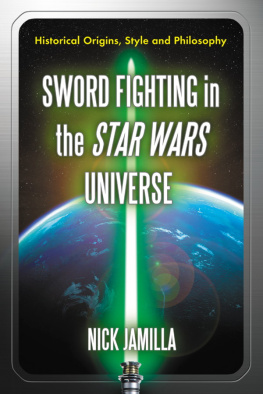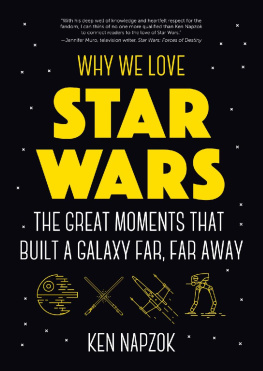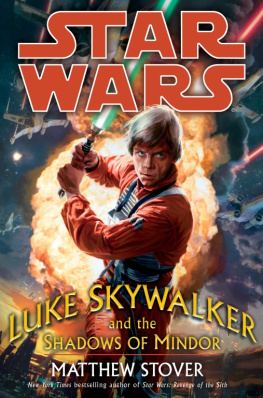The Secret History of Star Wars
The Art of Storytelling and the Making of a Modern Epic
Michael Kaminski
Legacy Books Press
Published by Legacy Books Press
RPO Princess, Box 21031
445 Princess Street
Kingston, Ontario, K7L 5P5
Canada
www.legacybookspress.com
2008 Michael Kaminski. All rights reserved.
The moral rights of the author under the Berne Convention have been asserted.
The uploading and/or distribution of this e-book via the Internet or any other means without the permission of the publisher is illegal and punishable by law.
This Kindle book first published in 2012 by Legacy Books Press
Kaminski, Michael
The Secret History of Star Wars: The Art of Storytelling and the Making of a Modern Epic
Includes bibliographical references and index
ISBN-13: 978-0-9880192-5-6
1. Performing Arts : Film & Video - Reference 2. Performing Arts : Film & Video - Screenwriting 3. Culture : Star Wars 4. Star Wars
All citations and quotations are used under fair dealings and fair use. If you are a copyright holder of one of the works cited and feel your copyright has been infringed, please contact Legacy Books Press.
This book has not been endorsed or authorized by Lucasfilm or its associates, nor has it been endorsed by NASA.
This book is typeset in a Times New Roman 11-point font.
This e-book does not contain any Death Star plans, and even if it did, it did not at all give them to a pair of droids.
Table of Contents
Publishers Note
The Secret History of Star Wars was not an easy book to convert to Kindle format among other things, it contains over a thousand footnotes and endnotes. As many of these notes are important citations, they have been preserved in this conversion.
However, in the preservation of these footnotes and endnotes, the internal numbering and annotation from the print edition have been retained. As a result, the note number inside the note may not match the note number in the text. Legacy Books Press apologizes for any inconvience this may cause.
Acknowledgments
MUCH of this book was born out of discussion, debate and shared research with other Star Wars fans, primarily through online means. To those of you who continue to hold such an interest in the subject matter and to those willing to examine the films with a rational and critical eye, this book is a testament to your efforts. From these sources, special acknowledgment must be made to Noah Henson, Geoffrey McKinney, Chris Olivo and Toshe_Station, Greg Kirkman, Duane Aubin, and David Furr in this regard, among others. A work as large as this book did not spring into existence without the support and help of countless other individuals I am surely forgetting.
Special mention must also be made to The Starkiller Jedi Bendu Script Site, a site dedicated to preserving and archiving early Star Wars drafts and written artifacts, as well as containing a reservoir of various essays and papers exploring the evolution of the Star Wars screenplays. Among these, Jan Helander and Bjorn and Brendon Wahlbergs work provided the most useful information, and were often used as convenient reference tools.
Finally, as will become evident upon reading the body of this work, much of this manuscript is comprised of quotations from individuals gleaned from secondary sources. This, in fact, is one of the purposes of this book, to demonstrate that the fractured history of Star Wars has remained buried in time over the years and need only to be stitched together into some sort of cohesive explanationand most importantly, many of these are from as early a time period as could be found, as the history has shifted in its telling as time has transpired. There are too many to even begin to list herethe End Notes section is particularly meticulous to ensure that an accurate record of these sources exists, most of them quoted from magazine and newspaper sources ( Starlog and Rolling Stone in particular being consistently cited, with Kerry O Quinns excellent series of interviews which ran from July to September of 1981 in the former being exceptionally illuminating into Lucas early writing efforts). For those wishing for a good base of full, re-published interviews, the University Press of Mississippis George Lucas Interviews is available, containing many wonderful reprints of vintage interviews.
Dale Pollocks Skywalking: The Life and Films of George Lucas continues to remain as the golden standard for an objective analysis of the man and his work, being the only book containing a revealing insight into his early years, and was a source of much information, and of course Laurent Bouzereaus magnificent The Annotated Screenplays continues to be upheld as a rare insight into the many X-factors of Star Wars history. For those wishing for a journal of the making of Star Wars , J.W. Rinzlers authoritative book on the subject is your one-stop source that will forever remain as the source of information on the film, and provided invaluable supplemental information. It is mandatory reading for anyone wanting to know about the original film and the origin of the series, and contains mountains of information that has not been included here, including additional insight into the writing process.
Finally, I must also give enormous thanks to my editor, Robert Marks, who believed in this book from day one and has been a great source of encouragement; without his efforts, The Secret History of Star Wars would not be in your hands.
Foreword
ON May 25 th , 2005, twenty-eight years to the day that a film called Star Wars burst onto cinema screens for the first time, I sat and watched Revenge of the Sith , the final piece in a generation-spanning cinematic epic quietly begun all those years ago, and now finally ended. As the curtain closed on the silver screen before me and the celluloid reels spun empty in the projection booth behind me, there was at once the overwhelming feeling of relief, knowing that the decades-long journey of telling this mighty tale had now been finished, but I also felt something much deeper: that an entire generation of viewers was being inaugurated that was largely ignorant to the historic process that led us to this sixth and final film.
The Star Wars saga is no ordinary one: told out of order, funded almost exclusively on a private bank account, utilising thousands of artisans and millions of dollars, it comprises the single most successful series of films in movie history. It is a true cultural phenomenon, the scale and scope of which may be unequalled in the world, one that has enthralled hundreds of millions and made its modest creator rich beyond his wildest dreams.
Today, it is unofficially known as The Tragedy of Darth Vader a true epic of mythical proportions that charts the rise, fall and redemption of an iconic character on a scale unrivalled in cinema. So gargantuan is its cultural imprint that it is commonly compared to classic myths of the past. Yet things were not always as they now are. What appeared and enchanted people who first saw and heard the words Star Wars is very different to the Star Wars that people see and hear today. It was once a tale so unlike its current embodiment that it is no longer viewed under that original groundbreaking configuration, so different that its own creator has even distorted the truth in certain instances, essentially reshaping film and cultural history in the process.
This is the Secret History of Star Wars. But what exactly do I mean by that? I first became aware that something was amiss sometime in 2002 when it was demonstrated by a fellow fan that Darth Vader, the iconic figure of evil, and Anakin Skywalker, the flawed Jedi who turns to evil and becomes Darth Vader, were originally conceived as separate people. Not separate constructs, as they now might be said to exist in the saga from a certain point of viewbut entirely different characters, totally independent of one another, each existing in some imagined history within the same narrative time and space. Indeed, a cursory evaluation of Lucas own early notes and script material reveals that Darth Vader and the father of Luke Skywalker were characters that existed together , onscreen as separate entities. Clearly, the history of the early story differed drastically from the account in common knowledge, which held that the story had been more or less blueprinted in the mid-1970s.
Next page
